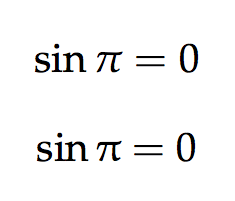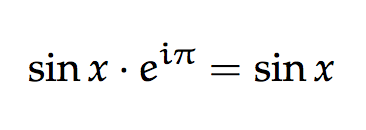Upright pi with mathpazo
A friend of mine asked if it were possible to define an upright pi to use to represent the constant number pi. ISO standards recommend this as well as upright i and e for their respective mathematical constants, but it’s not common to see the upright pi due to the constraints of most maths fonts.
I’m not aware of a general solution to accessing an upright pi (until unicode-math becomes more widespread), but luckily in this case we were working with the Palatino-based mathpazo fonts. Palatino was designed by Hermann Zapf, who also designed the upright maths font Euler; like most of HZ’s fonts, these two harmonise very well together. So we can take Euler’s upright pi to use in our otherwise Palatino-based Greek alphabet.
(Disclaimer: I actually don’t know the origins of the Greek mathpazo letters; they may in fact not be based on any font designed by HZ himself but simply drawn to match the Palatino clone used in the mathpazo package.)
This is performed in LaTeX with the following invocation:
\usepackage{mathpazo}
\DeclareSymbolFont{euler}{U}{eur}{m}{n}
\DeclareMathSymbol \uppi \mathalpha {euler} {"19}
You may then use \uppi to obtain an upright pi symbol:

If you would prefer to replace the original definition of \pi, write instead
\DeclareMathSymbol \pi \mathalpha {euler} {"19}
and all pi symbols in the document will be typeset with the upright glyph. I wouldn’t anticipate most readers being able to distinguish the difference between these pi glyphs, so I suggest using discretion in mixing the two.
If you would also like to replace the default e and i glyphs by their upright shapes from the Euler font, write as well
\DeclareMathSymbol {e} \mathalpha {euler} {`\e}
\DeclareMathSymbol {i} \mathalpha {euler} {`\i}
and you will receive:

Disregarding the nonsense maths, I like it.